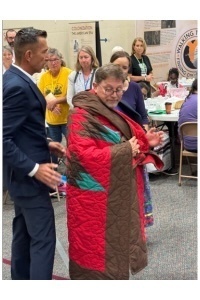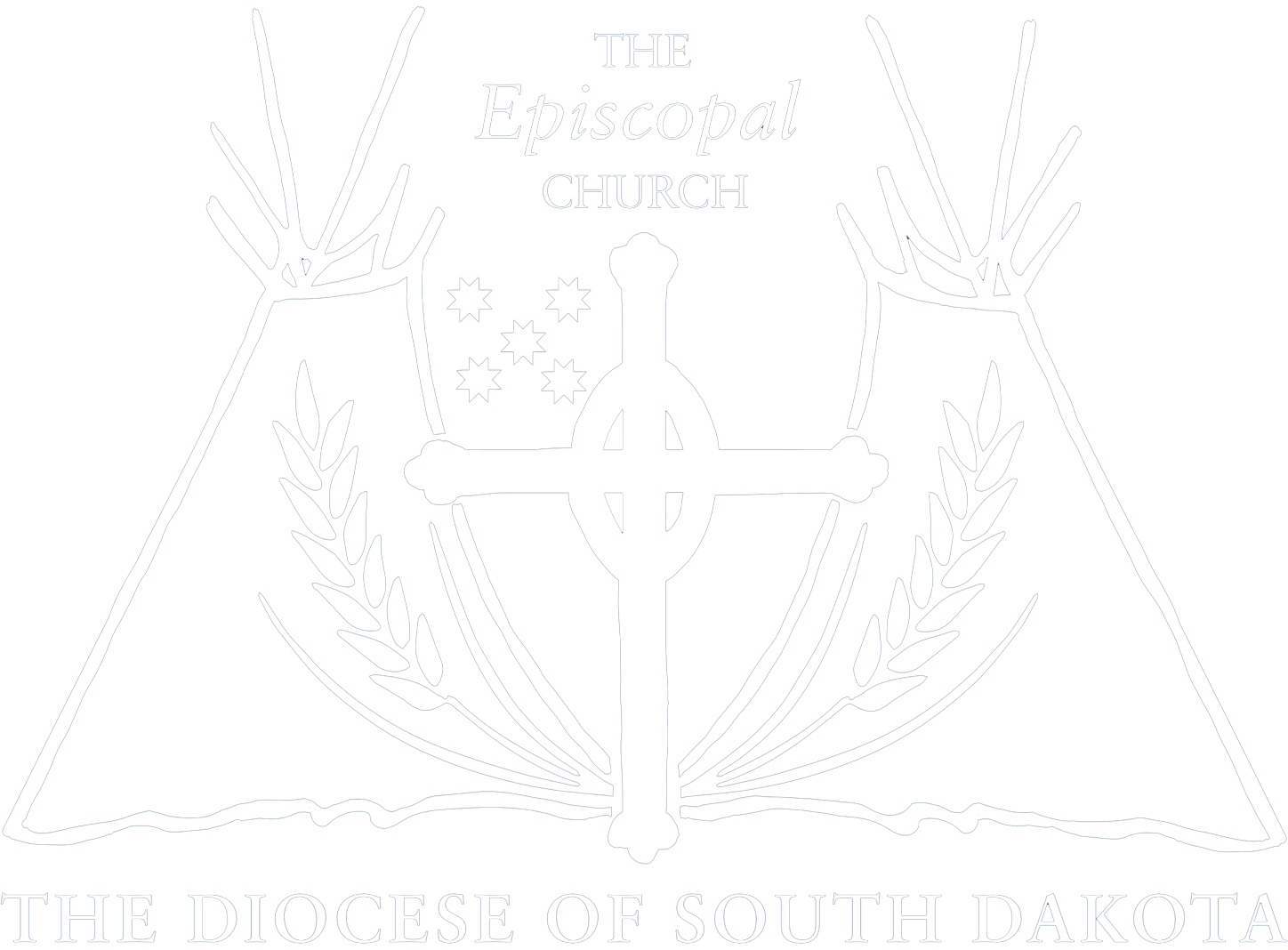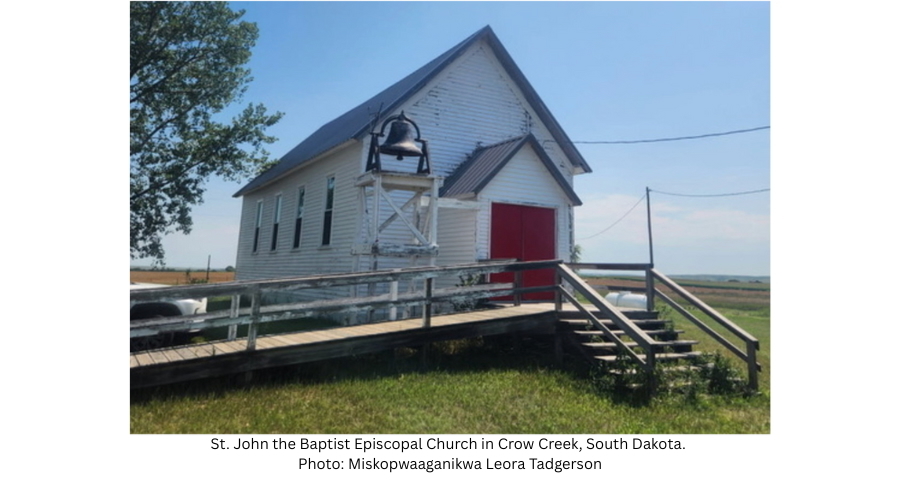[Episcopal News Service] The Crow Creek Sioux Tribe and the Diocese of South Dakota are developing a “beautiful relationship” after South Dakota Bishop Jonathan Folts formally apologized for the diocese’s involvement in operating Indigenous boarding schools.
“[Folts’] apology was one of the most heartfelt, most sincere things I’ve ever listened to coming from another human being. …I had been praying about bringing healing to my people on this level for a long time,” Crow Creek Chairman Peter Lengkeek, the son of a boarding school survivor, told Episcopal News Service in an Oct. 9 telephone interview. “I could actually feel the conviction in every word and every breath. …That was definitely a gateway opportunity to a beautiful relationship and opportunities to heal.”
Hundreds of boarding schools were operated by the government and religious denominations starting in the 19th century as part of a federal policy of forced assimilation of the continent’s native inhabitants. Since then, research has shown that most of the boarding schools with Episcopal ties were in South Dakota, including the Crow Creek Dormitory.
“Our actions have alienated and separated us from you, our Native siblings. Instead of showing ourselves as imitators of Jesus Christ, as our Scriptures call us to be, we instead have acted as divine enforcers of a misguided notion of entitlement and betterment,” Folts said in his apology delivered Aug. 16 to Lengkeek at St. John the Baptist Episcopal Church on the Crow Creek Indian Reservation. The apology was first made public when it was read during South Dakota’s Oct. 3-4 diocesan convention in Pierre.
The bishop told ENS in an Oct. 9 email that it’s important for The Episcopal Church to apologize for its historic role in supporting Indigenous boarding schools because it signifies truth-telling and a desire to build positive relationships with tribes.
“The Episcopal Church’s history of participating in a system that took children from Native and Indigenous families—stripping them of language, story, and identity as sovereign peoples—cannot be undone. But it must be named,” Folts said in his email. “A formal apology is the first way the church can speak this truth aloud. It says to those who were harmed, and to their descendants, that we see the pain our church helped cause and that we are committed to walking a different path.”

During the Diocese of South Dakota’s Oct. 3-4 convention, Crow Creek Chairman Peter Lengkeek presented South Dakota Bishop Jonathan Folts with a handmade Native American star quilt, which symbolizes wisdom, understanding, the four stages of life – infancy, youth, maturity and old age – and the four cardinal directions. Photo: Lauren Stanley
Last year, The Episcopal Church identified church involvement in operating 34 of the 526 known boarding schools in the United States. The church’s fact-finding commission, established by General Convention Resolution A127, has discovered at least a dozen more schools since then, according to Veronica Pasfield, a member of the Bay Mills Indian Community and an Indigenous boarding schools historian who works as an archival consultant for The Episcopal Church. These schools included federally operated schools where Episcopal clergy taught Christian education and government schools that required students to attend nearby Episcopal churches for worship services and classes.
Pasfield told ENS that church-operated boarding schools are often referred to as “mission schools,” but they were, in fact, contract schools. She said specifying the language is important because the signed contracts meant the U.S. Department of the Interior would pay churches to operate schools using funds that had been designated to support Native American tribes. This means that church leaders were motivated not just by opportunities to proselytize, but also by money.
“This notion that it was simply these missionaries who wanted to pull these ‘savages’ into the community of God-fearing humans is only half of the story,” Pasfield said. “This is part of why [The Episcopal Church’s boarding schools research and advocacy groups] have pursued dialogue and relationships with tribal governments.”
Pasfield’s academic background includes a doctorate in American studies, specializing in researching Indigenous boarding schools.
During the small gathering where Folts apologized, Pasfield gave an overview of the records found in government and church archives she and the A127 commission have been analyzing since 2024.
The boarding schools were designed to assimilate Native Americans into the dominant white culture and erase Indigenous languages and practices. Children were forced to learn English and were violently punished for speaking their Native languages. By official records, nearly 1,000 children are known to have died during the 19th and 20th centuries in boarding schools nationwide, according to a July 2024 report by the Department of the Interior. However, some experts estimate the number is closer to 40,000. In many cases, children faced physical, sexual and mental abuse.
Lengkeek said the generational trauma stemming from boarding schools continues to harm Crow Creek Native Americans today through chronic sickness, addiction and violence. Tribal members’ life expectancy is 45 years, well below the national average of 78.4 years. Lengkeek described the mental and physical health issues as consequences of the “boarding school cycle.” The cycle began when toddlers were forcefully removed from their homes and sent to a school – oftentimes hundreds of miles away – without knowing when they would reunite with their families. They usually couldn’t return home for several years; many children never returned home.
“You’re put into that system at a very young age, and you’re raised by nuns and priests who don’t have your best interests at heart and don’t display any love, kindness, welcoming or nurturing – just a roof and a scant meal. And then you become an adult and age out of the system with no nurturing, housekeeping or basic life skills. Then you have children and raise them the way you were raised by the nuns, and they grow up and raise their children the same way,” Lengkeek said.
“We’re still seeing that cycle playing out in many of our families today. Families who have broken that cycle raised their children with love; love is how you break the cycle.”
Lengkeek explained the “boarding school cycle” to Episcopalians during his speech at South Dakota’s diocesan convention. He also talked about the tribe’s and diocese’s early discussions aimed at co-developing Indigenous-led truth-telling and reconciliation initiatives.
The Crow Creek Sioux mostly descend from the Mdewakanton Dakota of Minnesota. When they were exiled by governmental order from Minnesota following the Dakota War of 1862, they settled in present-day South Dakota. Many Crow Creek Sioux continue to practice Dakota ceremonial rituals today, such as the burning of red willow bark, which were incorporated into the August gathering where Folts apologized. Lengkeek also prayed and sang in the Dakota language.
“It was great to see a bishop understand the spiritual needs beyond Indigenous ministries from a Christian lens, right into tribal sovereignty and self-determination,” Miskopwaaganikwa Leora Tadgerson, a member of the Bay Mills Indian Community and the Diocese of Northern Michigan’s director of reparations and justice, told ENS. “It established a spiritual, reciprocal sacredness before we officially started the meeting.”
Tadgerson also serves as chair of The Episcopal Church’s boarding schools advocacy committee, which was established by Executive Council through Resolution MW062. She was the keynote speaker for South Dakota’s diocesan convention, where she provided an overview of the advocacy committee’s work. She also brought with her to South Dakota’s diocesan convention the Diocese of Northern Michigan’s traveling exhibit, “Walking Together: Finding Common Ground,” which showcases stories of Indigenous boarding school survivors in Michigan.
Even though the Aug. 16 gathering was small and only a few Crow Creek tribal members were present to hear Folts’ apology, “the land heard it, and it was spoken into existence,” said Lengkeek, who plans to meet regularly with Folts to continue building the tribe’s relationship with the Diocese of South Dakota.
Folts told ENS in his email that the apology is not an end, but a beginning. “It is the first of many steps as we seek to listen again, learn again, and rebuild trust again—with humility, courage and hope.”
-Shireen Korkzan is a reporter and assistant editor for Episcopal News Service. She can be reached at skorkzan@episcopalchurch.org.

